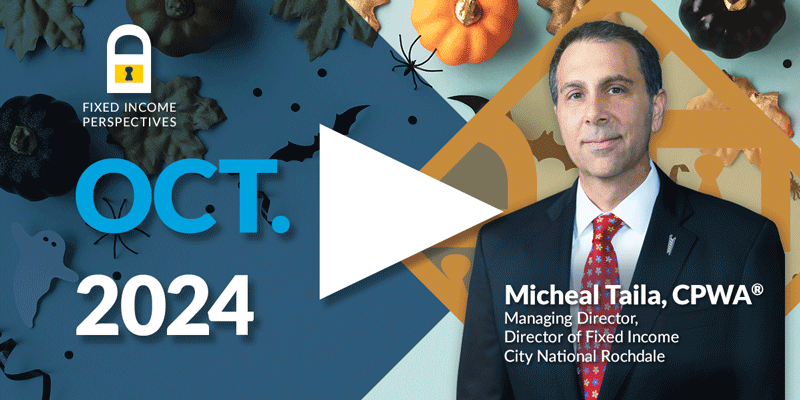

FAQs on the Markets and Economy
Has inflation peaked?
It appears so. The yearly change in the consumer price index (CPI) fell in July to 8.5% from 9.1%, which was the highest in 40 years. A big chunk of the pullback came from dropping gasoline prices, which fell 7.7% month over month but are still up 32.9% year over year (YoY). The cost of a gallon of gasoline has fallen by $1.05 since peaking in mid-June at $5.01/gallon. It was $3.62/gallon when the war in Ukraine started.
The drop reflects several factors:
- Weaker demand due to the higher cost of driving
- The decline in global oil prices brought on by the fear of a worldwide recession
- The suspension of gasoline taxes in a handful of states
The level of inflation is still sky high, and the Federal Reserve (Fed) remains concerned. Fed chair Jerome Powell has been clear for some time that the Fed needs to see clear evidence of a sustained slowdown in inflation before it pivots on monetary policy. The softer pace of inflation in July, along with the expectation of another weak inflation report for August, is important news for the Fed as it makes plans for its next interest rate hike in September.

When will the Fed stop raising interest rates?
It doesn’t appear to be soon. Based on its projections in June, it still plans to raise interest rates by another 100 basis points (bps) this year. The last two interest rate increases were 75 bps each. Those were unusually large increases, something the Fed had not done since 1994. Now that the federal funds rate is near the neutral territory (see chart below), Fed officials are growing sensitive to the economic impact their rate hikes will have on the economy. They want to make sure they do not cause unwarranted economic weakness. But at the same time, they know they need to raise interest rates enough to slow the pace of economic growth, which should cause inflationary pressures to drop.
The next Federal Open Market Committee (FOMC) meeting is on September 21st, and another labor and CPI report will be released before that meeting. Data from those reports, and the Fed’s analysis, will help the Fed decide if it should raise rates by 50 bps or 75 bps.

What does the Inflation Reduction Act mean for the economy and markets?
After over a year of political wrangling, President Biden and the Democrats have successfully passed the Inflation Reduction Act (IRA), a climate-, tax- and health-focused bill. Overall, the IRA is expected to raise approximately $737 billion in revenue over 10 years through a 15% corporate minimum tax on companies earning over $1 billion in profits, a 1% tax on stock buybacks and greater IRS enforcement and by allowing Medicare officials to negotiate directly on prescription drug costs. The IRA provides for spending over $430 billion over 10 years to reduce carbon emissions and extend health insurance subsidies related to the Affordable Care Act.
Despite its name, the IRA is expected to have little impact on reducing current and long-term inflationary pressures. Even the touted step of allowing Medicare to negotiate the prices of some drugs doesn’t begin until 2026 and will have small effects thereafter on overall inflation. Likewise, the impacts on growth are likely to be marginal. Together with the recently passed CHIPS and Science Act and Facilitating American-Built Semiconductors Act, US Gross Domestic Product (GDP) is expected to increase over the next decade by a modest 0.2%-0.3%.
The IRA is expected to reduce the deficit by about $300 billion over the next decade. While this would represent just a tiny proportion of the next decade’s projected $16 trillion in budget shortfall, it’s a step in the right direction, improving federal finances and leaving enough budget space to avoid reaching the debt ceiling until 2024.
Overall, the bill will likely prove a modest headwind to corporate profits, with analysis suggesting the 15% minimum corporate tax rate would be a 1% drag on S&P 500 earnings per share (EPS) in 2023. It’s estimated that fewer than 150 companies will be affected by the new rate, with sectors facing notably higher tax bills including chemical manufacturing, technology, healthcare and real estate. The pharmaceutical sector will also be negatively affected since Medicare is now allowed to negotiate on key drug prices. Companies and sectors that should benefit from the IRA Act are those dealing with climate change mitigation efforts, such as electric carmakers and renewable energy, while the CHIPS Act includes tax incentives for semiconductor equipment and manufacturing facilities investment.

What are the credit implications of drought on municipal water utilities?
Media outlets continue reporting on drought conditions affecting many regions of the country, particularly the western states, where severe drought (or worse) is stressing the ecosystem as water supplies diminish. Hydrological volatility is not a new phenomenon, particularly for states like California, which is experiencing its third consecutive dry year, with 2022 having the driest conditions to date in at least 128 years, per the U.S. Drought Monitor. While western states are familiar with periods of above- and below-average precipitation, climate change is causing drought to occur more frequently, last longer and have a higher intensity than historical patterns. Despite some relief in recent weeks for some areas like Arizona and Nevada, abnormal heat and dryness are forecast to continue for most western states into 2023. In response, municipal water utilities must not only carefully plan near-term contingencies but also consider longer-term capital strategies that balance water supply access and customer demand.
Recent conditions have pulled forward critical legislative discussions and developments around policy directives to broaden investment in water supply projects and increase conservation efforts (i.e., imposing voluntary or mandatory water restrictions). For example, California Governor Gavin Newsom released a plan outlining several initiatives to protect and expand the state’s future water supply, such as streamlined permitting for recycled water infrastructure and local water agency financial support grants. Arizona, impacted most significantly by the recent U.S. Bureau of Reclamation water shortage declaration in the Colorado River Basin, is investing further in groundwater recharge and is planning drought-tolerant supply alternatives. In recent years, we’ve observed municipal water utilities execute agreements that allow water transfers in the event of supply shortages. Also, customer rates have been increasingly designed to recover service costs, often leading to revenue durability that strengthens their ability to repay debt more comfortably.
Municipal water utilities’ financial and operational performance will vary based on local supply conditions and enterprise-specific considerations, like rate-setting practices.
We expect drought and hydrology planning to become more embedded in climate adaptation strategies. Maintaining adequate financial capacity and flexibility is paramount in the analysis of credit quality for water utilities. Preserving balance sheet liquidity and consistently generating a healthy debt coverage cushion while addressing drought risk reflects management stewardship – an essential factor in our criteria. State and federal government involvement is likely to grow, as evidenced by the recent passage of the Inflation Reduction Act, which included $4 billion to help fund various drought resiliency measures, like conservation.

Important Disclosures
The information presented does not involve the rendering of personalized investment, financial, legal or tax advice. This presentation is not an offer to buy or sell, or a solicitation of any offer to buy or sell, any of the securities mentioned herein.
Certain statements contained herein may constitute projections, forecasts and other forward-looking statements, which do not reflect actual results and are based primarily upon a hypothetical set of assumptions applied to certain historical financial infor-mation. Certain information has been provided by third-party sources, and although believed to be reliable, it has not been inde-pendently verified, and its accuracy or completeness cannot be guaranteed.
Any opinions, projections, forecasts and forward-looking statements presented herein are valid as of the date of this document and are subject to change.
There are inherent risks with equity investing. These include, but are not limited to, stock market, manager or investment style risks. Stock markets tend to move in cycles, with periods of rising prices and periods of falling prices.
Investing in international markets carries risks such as currency fluctuation, regulatory risks and economic and political instability.
There are inherent risks with fixed income investing. These may include, but are not limited to, interest rate, call, credit, market, inflation, government policy, liquidity or junk bond risks. When interest rates rise, bond prices fall. This risk is heightened with in-vestments in longer-duration fixed income securities and during periods when prevailing interest rates are low or negative.
Investing involves risk, including the loss of principal.
As with any investment strategy, there is no guarantee that investment objectives will be met, and investors may lose money.
Past performance is no guarantee of future performance.
This material is available to advisory and sub-advised clients, as well as financial professionals working with City National Rochdale, a registered investment advisor and a wholly-owned subsidiary of City National Bank. City National Bank provides investment management services through its sub-advisory relationship with City National Rochdale.
Non Deposit Investment Products are: Not FDIC Insured, Not Bank Guaranteed, May Lose Value
The information presented does not involve the rendering of personalized investment, financial, legal, or tax advice. This presentation is not an offer to buy or sell, or a solicitation of any offer to buy or sell any of the securities mentioned herein.
Certain statements contained herein may constitute projections, forecasts and other forward-looking statements, which do not reflect actual results and are based primarily upon a hypothetical set of assumptions applied to certain historical financial information. Readers are cautioned that such forward-looking statements are not a guarantee of future results, involve risks and uncertainties, and actual results may differ materially from those statement. Certain information has been provided by third-party sources and, although believed to be reliable, it has not been independently verified and its accuracy or completeness cannot be guaranteed.
Past performance or performance based upon assumptions is no guarantee of future results.
Indices are unmanaged and one cannot invest directly in an index. Index returns do not reflect a deduction for fees or expenses.
Any opinions, projections, forecasts, and forward-looking statements presented herein are valid as on the date of this document and are subject to change.
All investing is subject to risk, including the possible loss of the money you invest. As with any investment strategy, there is no guarantee that investment objectives will be met and investors may lose money. Diversification does not ensure a profit or protect against a loss in a declining market. Past performance is no guarantee of future performance.
This material is available to advisory and sub-advised clients, as well as financial professionals working with City National Rochdale, a registered investment adviser and a wholly-owned subsidiary of City National Bank. City National Bank provides investment management services through its sub-advisory relationship with City National Rochdale.
INDEX DEFINITIONS
S&P 500 Index: The S&P 500 Index, or Standard & Poor’s 500 Index, is a market-capitalization-weighted index of 500 leading pub-licly traded companies in the U.S. It is not an exact list of the top 500 U.S. companies by market cap because there are other criteria that the index includes.
Muni Bond: A municipal bond is a debt security issued by a state, municipality or county to finance its capital expenditures, including the construction of highways, bridges or schools. These bonds can be thought of as loans that investors make to local govern-ments.
Bloomberg Barclays U.S. Corporate High Yield Bond Index: measures the USD denominated, high-yield, fixed-rate corporate bond market.
Dow Jones Select Dividend Index: The Dow Jones U.S. Select Dividend Index looks to target 100 dividend-paying stocks screened for factors that include the dividend growth rate, the dividend payout ratio and the trading volume. The components are then weighted by the dividend yield.
CBO: A collateralized bond obligation (CBO) is a type of structured debt security that has investment-grade bonds as the underlying assets backed by the receivables on high-yield or junk bonds.
Moody’s: Moody’s Corporation (MCO) is the holding company that owns both Moody’s Investors Service, which rates fixed income debt securities, and Moody’s Analytics, which provides software and research for economic analysis and risk management. Moody’s assigns ratings on the basis of assessed risk and the borrower’s ability to make interest payments, and its ratings are closely watched by many investors.
Penn Wharton Budget Model: Penn Wharton Budget Model’s (PWBM) tax policy simulator allows policymakers, members of the media, and the general public (“users”) to see the impact that potential reforms to tax policy will have on many the economy and the federal budget.
NDMC: National Drought Mitigation Center (NDMC) The National Drought Mitigation Center’s mission is to reduce the effects of drought on people, the environment and the economy by researching the science of drought monitoring and the practice of drought planning.
NOAA: The National Oceanic and Atmospheric Administration (NOAA) is an American scientific and regulatory agency within the United States Department of Commerce that forecasts weather, monitors oceanic and atmospheric conditions, charts the seas, conducts deep sea exploration, and manages fishing and protection of marine mammals and endangered species in the U.S. exclusive economic zone.
USDA: The United States Department of Agriculture (USDA) is the federal executive department responsible for developing and executing federal laws related to farming, forestry, rural economic development, and food.
The SIFMA Municipal Swap Index: The Securities Industry and Financial Markets Association Municipal Swap Index is a 7-day high-grade market index comprised of tax-exempt Variable Rate Demand Obli-gations (VRDOs) with certain characteristics. The Index is calculated and published by Bloomberg. The Index is overseen by SIFMA’s Municipal Swap Index Committee.
CalPERS: The California Public Employees’ Retirement System, also known as CalPERS, is an organization that provides numerous benefits to its 2 million members, of which 38% are school members, 31% public agency members, and 31% state members.
4Ps: The 4P analysis is a proprietary framework for global equity allocation. Country rankings are derived from a subjective metrics system that combines the economic data for such countries with other factors including fiscal policies, demographics, innovative growth and corporate growth. These rankings are subjective and may be derived from data that contain inherent limitations.
Stay Informed.
Get our Insights delivered straight to your inbox.
Put our insights to work for you.
If you have a client with more than $1 million in investable assets and want to find out about the benefits of our intelligently personalized portfolio management, speak with an investment consultant near you today.
If you’re a high-net-worth client who's interested in adding an experienced investment manager to your financial team, learn more about working with us here


